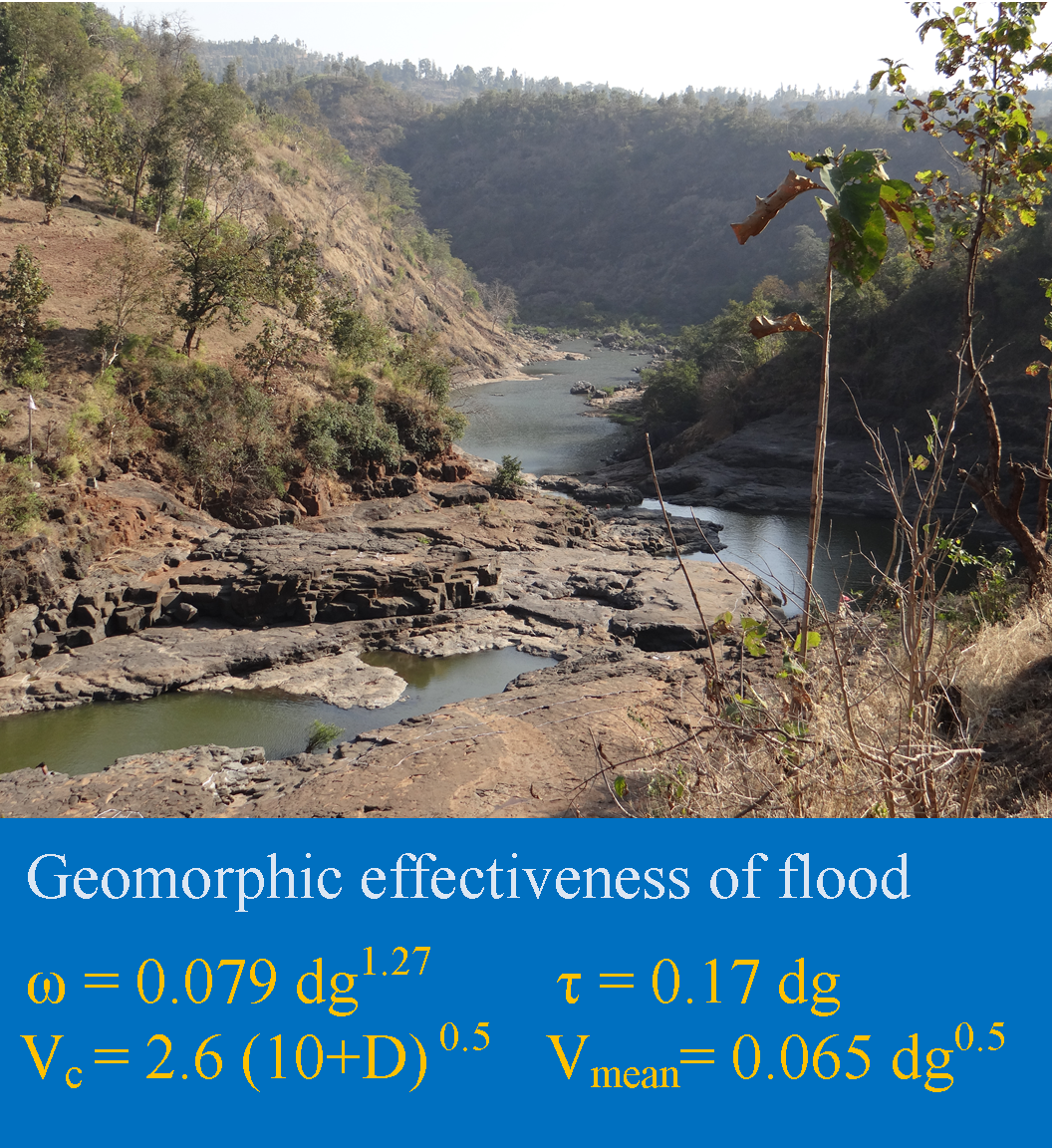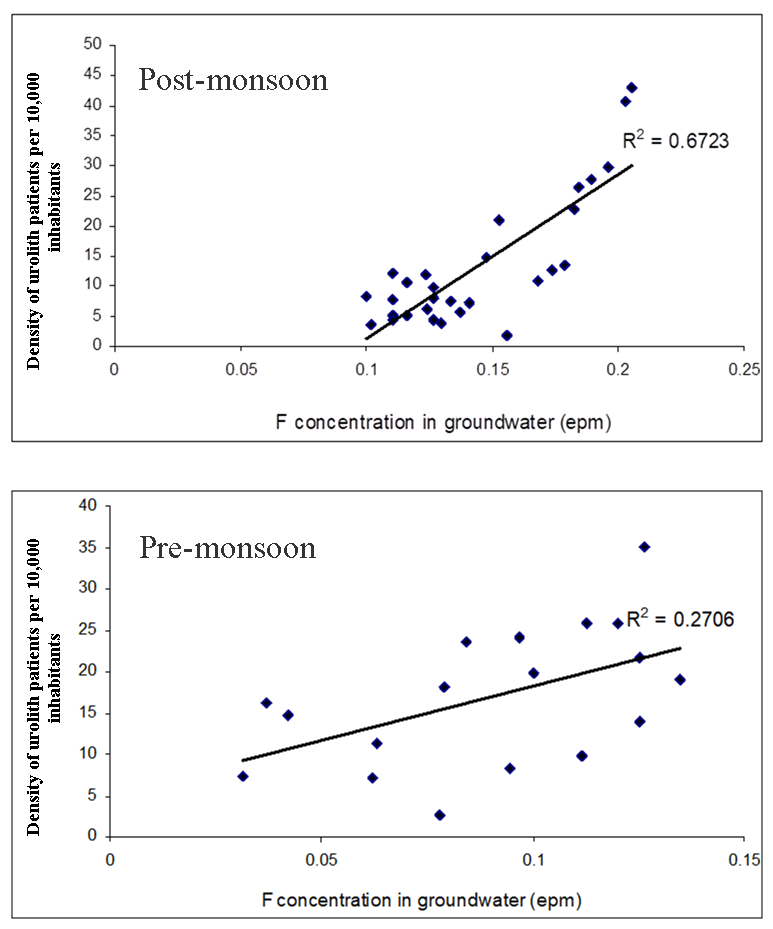Article Title :
Hydrologic and Geomorphic Aspects of High-magnitude Floods on the Par River in Western India
1 (2017)
3-8
Par River , Shear stress , Stream power , Geomorphic effectiveness


The geomorphic effectiveness of floods is evaluated in terms of unit stream power (\(\omega\)) and boundary shear stress (\(\tau\)) for floods on the Par River. The highest values for \(\omega\) and \(\tau\) for a flood on the river are 52125 W/m2 and 3320 N/m2, respectively. The estimated Froude numbers are <1 indicating subcritical flows. It is >1 for a few constricted reaches showing supercritical or shooting flows. High values of Reynolds number reveal that the flood discharges were extremely turbulent. Values of critical velocity for the inception of cavitation (Vc) show that none of the powerful floods on the river, except two, exceed the conditions. Estimates of \(\omega\), \(\tau\) and velocity associated with transported boulders indicate that all floods were competent to move large boulders of more than 5.5 m in diameter. The efficiency of high-magnitude flood events is evident from the presence of a variety of geomorphic features.

The geomorphic effectiveness of floods is evaluated in terms of hydraulics.
Flow hydraulics was obtained by calculating the hydrodynamic variables.
Values reveal unusually high ability of the river to erode and transport.
Efficiency of high-magnitude flood events is evident from features.
Baker, V.R., 1973. Erosional form and processes for the catastrophic Pleistocene Missoula floods in eastern Washington. Morisawa M. (Ed.), Fluvial Geomorphology. George Allen and Unwin, London, 123-148.
Baker, V.R., 1978. Palaeohydraulics and hydrodynamics of scabland floods. Baker, V.R., Nummedal D. (Ed.), The Channeled scabland: Washington, D.C., National Aeronautics and Space Administration, 59-79.
Baker, V.R. and Costa, J.E., 1987. Flood power. Mayer, L., Nash, D. (Eds.), Catastrophic Flooding. Allen and Unwin, London, 1-21.
Hire, P.S. and Kale, V.S., 2006. Geomorphic effectiveness of high-magnitude floods on the Tapi River: Evaluation based on flood hydrographs and stream-power graphs. Transactions. Institute of Indian Geographers, 28(2), 175-182.
Kale, V.S., Mishra, S., Enzel, Y., Ely, L.L., Rajaguru, S.N. and Baker, V.R., 1993. Flood geomorphology of Indian peninsular rivers. Journal of Applied Hydrology, 6, 49-55.
Leopold, L.B., Wolman, M.G., Miller, J.P., 1964. Fluvial process in geomorphology. Freeman, San Francisco.
Rajaguru, S.N., Gupta, A., Kale, V.S., Mishtra. S., Ganjoo, R.K., Ely, L.L., Enzel, Y. and Baker, V.R., 1995. Channel form and process of flood-dominated Narmada River, India. Earth Surface Processes and Landforms, 20, 407-421.




